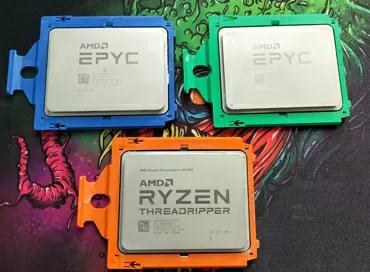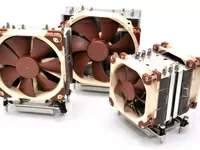Review of Cooler Master Wraith Ripper for workstations on Threadripper. Comparison with LSS on a 250 Watt CPU!
AMD Threadripper and EPYC processors for the SP3 socket differ from other CPUs in their huge size, and therefore require the cooler to cover the entire surface of the processor, evenly removing heat from all its cores. For this reason, cooling systems for AMD SP3 turn out to be too large for other processors, for example, in socket AM4 or Socket 1151, and you cannot make a good system with a universal mount. Somehow the manufacturers of " dropsy " manage to make universal models for each socket, but basically, for EPYC/Threadripper they produce separate coolers that are incompatible with anything else. Today we are considering just such an option from Cooler Master and answering the age-old question: which is better, `` air or water '' for powerful 200-watt processors?

The Wraith Ripper is a classic "tower" with seven heat pipes and one 120mm fan mounted in the cutaway of the radiator. To make the "classic" scheme look worthy of a top-end gaming CPU, Cooler Master clothed the cooler in a plastic casing with RGB backlighting, and for many years of progress, this is the first time that stylists have not just spoiled, but, on the contrary, improved the device, but in what way - we'll see now. Oh, and by the way, before you is the first review on the network in which we will not test RGB backlighting, because since we are talking about a cooler for a workstation, then we need to work, and not admire the overflow of LEDs.
Construction
The Wraith Ripper cooler turned out to be very bulky (161x132x150 mm), because its task is to remove heat not only from ordinary, but also from top-end processors that consume up to 250 watts. To ensure good airflow through the radiator, you need to either install two fans or one in the center, but in the cut, between the halves of the radiator, it should always be. Obviously, Cooler Master figured that a single 120mm fan would be enough if you close the air intake from the side, so that it can only take in air from the front and only send it back through the radiator fins.
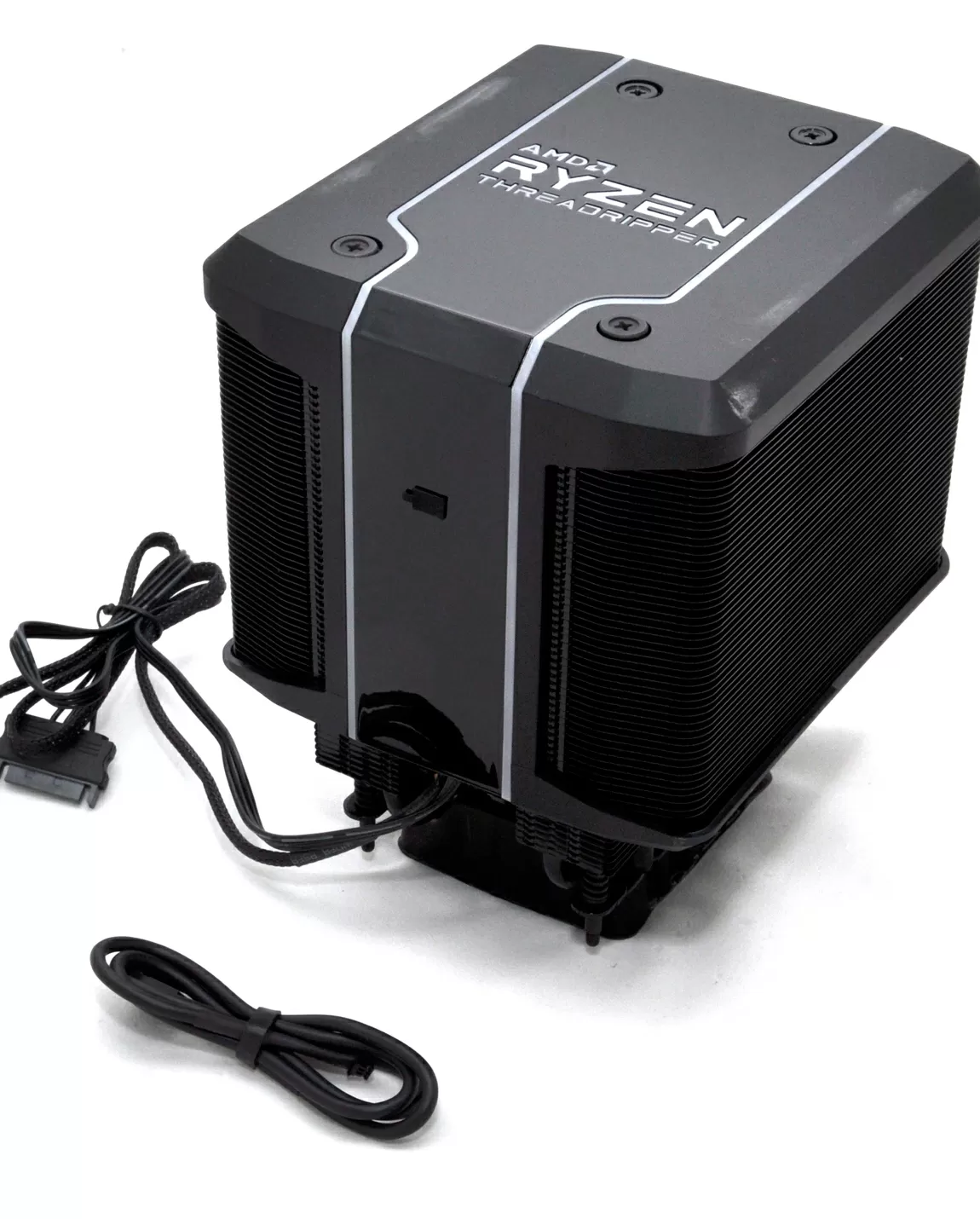
Having closed the fan around the perimeter, the designers only have to somehow decorate the surface that has appeared, adding programmable RGB backlighting with software control to it. And they did it by installing an RGB controller inside the cooler, which can be controlled from under Windows through special software. Now you can separately adjust the backlight intensity for the AMD Threadripper logo and the ribbon that runs across the entire surface of the cooler. The backlight is powered by the SATA power supply connector. Keep in mind that without a USB connection, the backlight will not activate, so by default the cooler just looks like a big black spot on your computer.
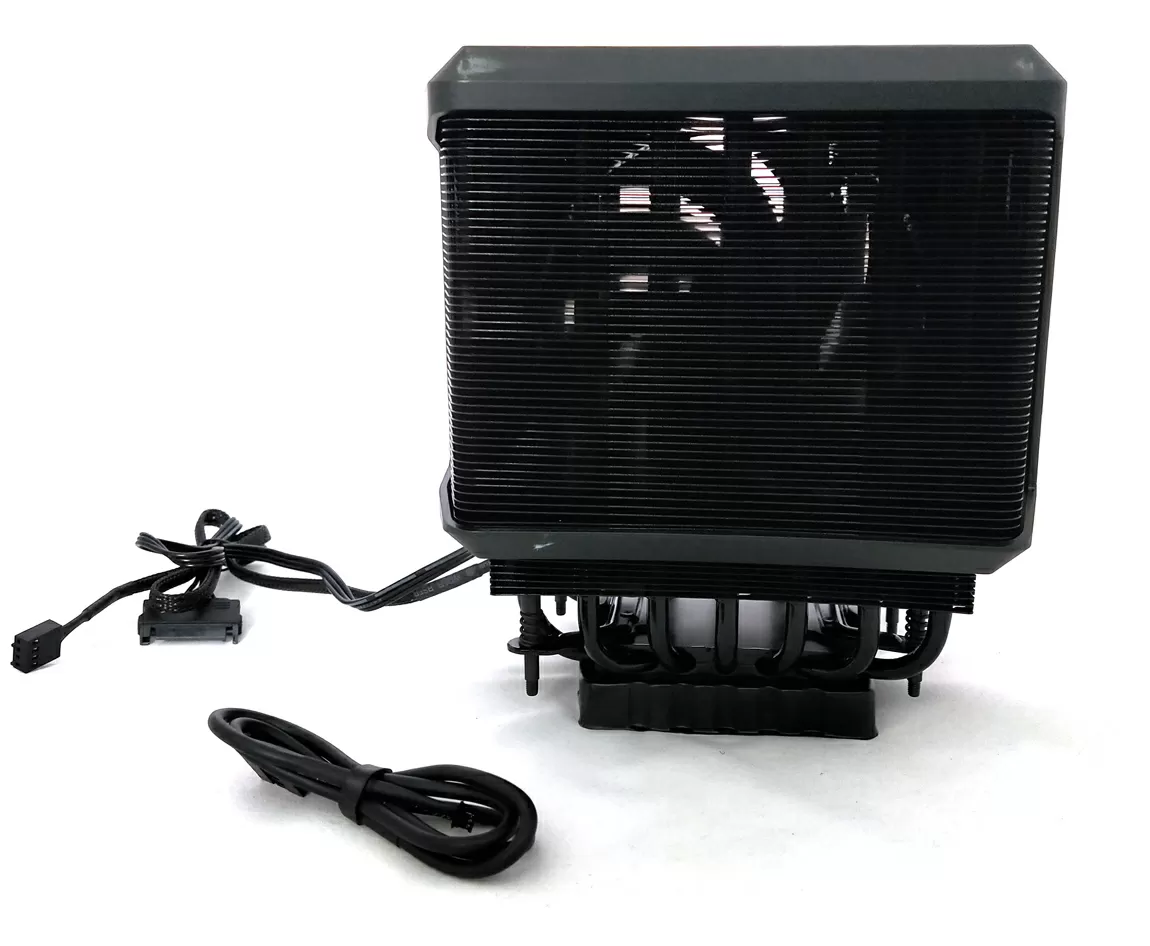
But this is about beauty, and from a technical point of view, a plastic case forms an airflow through the radiator, forcing the fan to blow both the front of the radiator and the back.
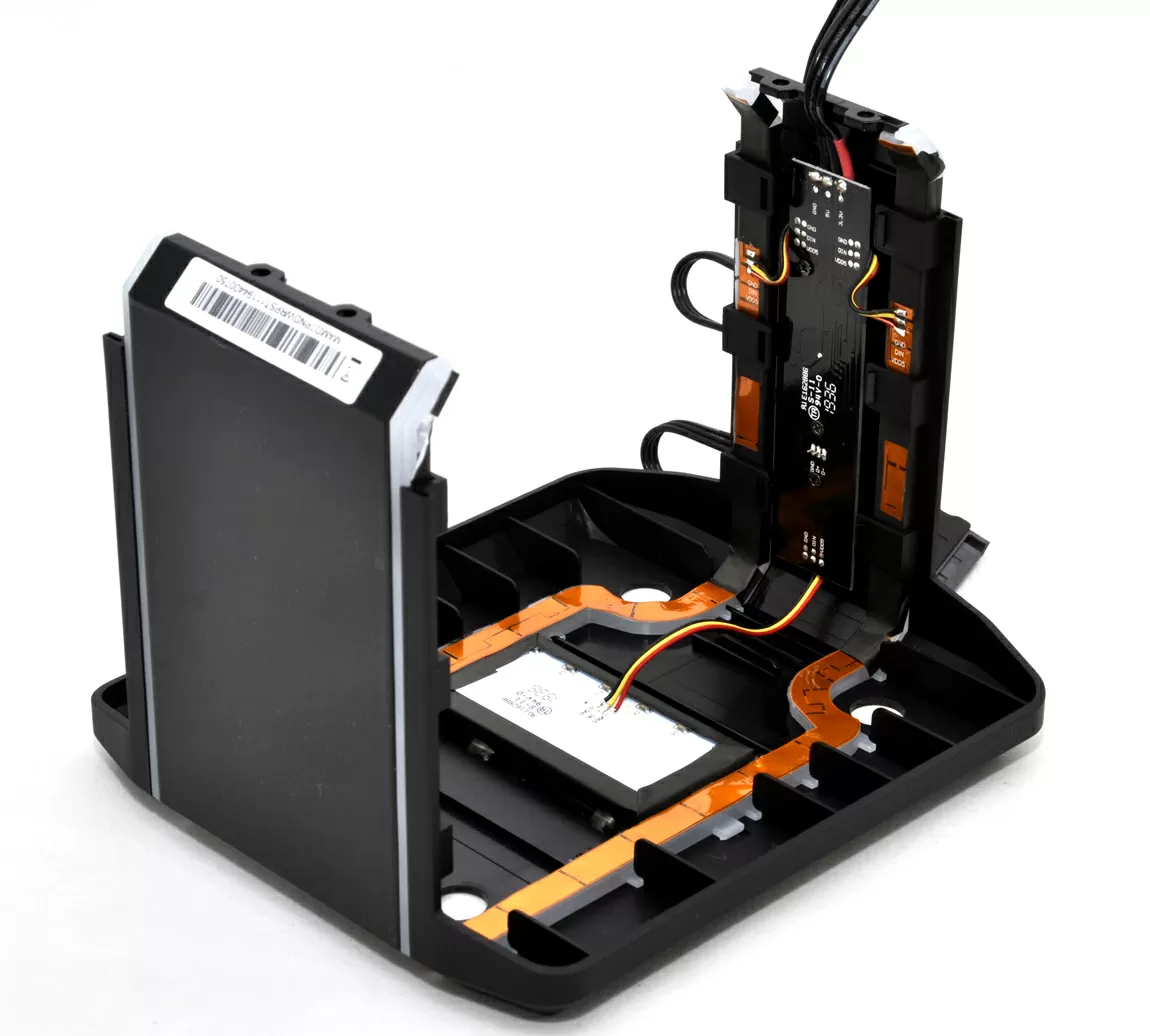
The mounting scheme for the AMD TR4/SP3 socket is asymmetrical, so the cooler is installed in only one position with one direction of air flow. Trying to get, rearrange or replace the stock fan is an empty idea: it is difficult to remove, it is closed on all sides and is not visible.

The 120x120x25 mm fan has 9 curved blades and the impeller is optimized for high pressure generation. Interestingly, the PWM control allows you to change its rotation speed from 0 to 2750 RPM, that is, you can achieve absolutely silent operation of the machine. In practice, this is only possible with the entry-level Threadripper series processors. The maximum noise level is 38 dB with a performance of 76.4 CFM, and the mean time between failures is 490 thousand hours (about 55 years). All that is known about the rotor suspension is that it has a mysterious "Servo Bearing" type and is designed to work in 24x7 mode.
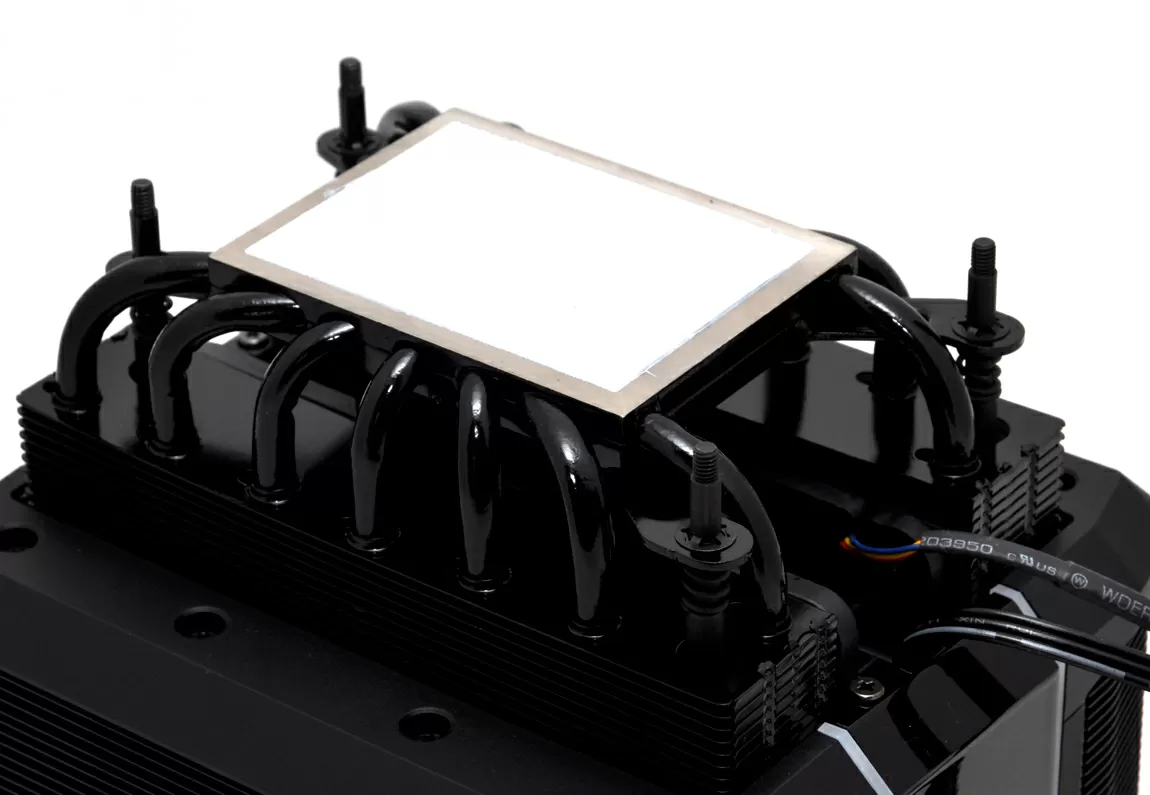
The base of the radiator is copper, nickel-plated, and a thick layer of thermal paste is applied to it from the factory, which, when installed, falls on the socket and next to it. They certainly did not stint. The sole dimensions are 72x55 mm, and comparing with the processor, we can say that there is still a margin here. The surface has a matt finish while remaining perfectly flat.
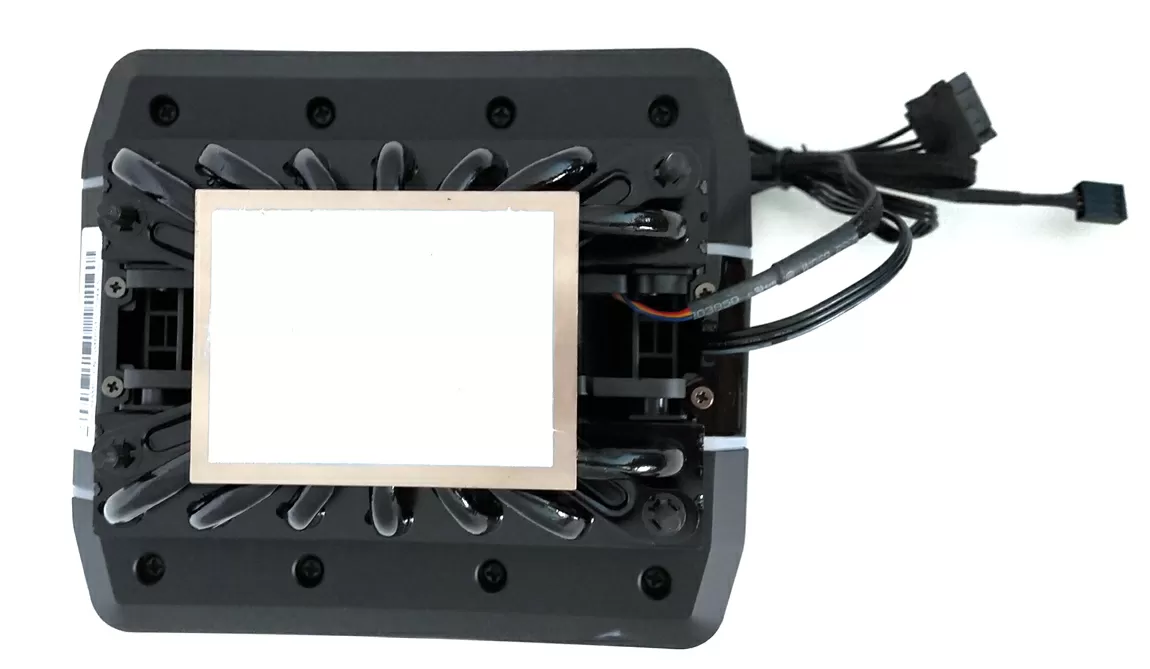
The installation process is reduced to tightening four long screws that go through the entire height of the radiator. The cooler weighs 1.6 kg, the motherboard noticeably bends under its weight, so be careful.
Testing
Today, even the hottest processors have excellent overheating protection and will work not only with a cooler, but even with a piece of wood, to which a fan is attached with tape. The whole question is how many cycles the CPU will skip so as not to overheat above the allowable value. Our test ThreadRipper 2990WX has this critical threshold of 94 degrees Celsius . Everything below is the norm, and above the temperature does not rise due to throttling. To make things easier for ourselves, we tested coolers with an ambient temperature of +32 degrees Celsius, on an open bench, that is, in approximately the same conditions as your processor will work in a server or workstation.
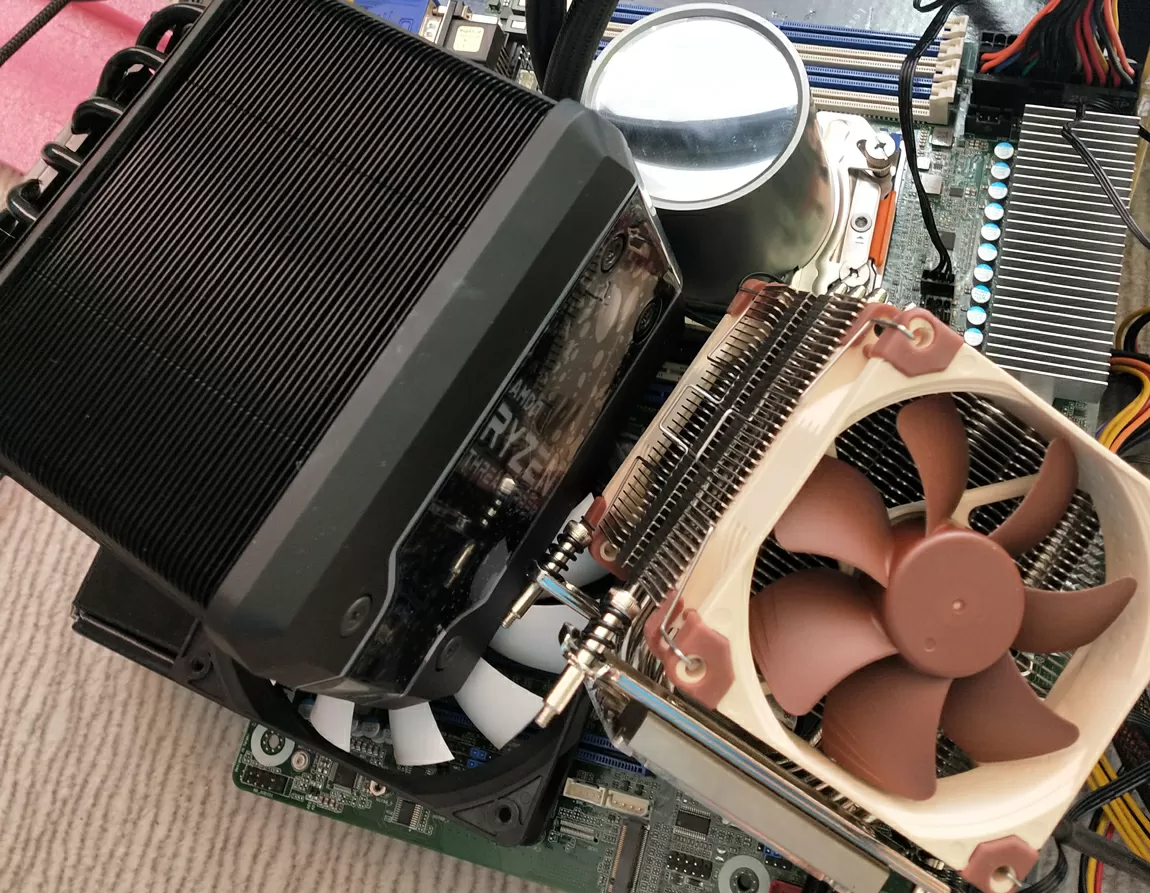
- Processor - AMD Threadripper 2990WX (tdp = 250 Wt)
- Motherboard - ASRock Rack X399-DA8
- Windows 2016 R2
For comparison, we take:
- Noctua NH-U9 SP3 - still a larger 4U server cooler for EPYC processors
- DeepCool Castle 360RGB v2 is still a gaming SVO, which supports the SP3 socket on a smaller heat sink area.
In all tests, the fan/pump speed was set to maximum, and the OCCT package with its own heating and Linpack was used for warming up. I also measured the maximum temperature from three consecutive runs of Cinebench R20.

The first test is one big disappointment: in hard synthetics, no one can cope with cooling a 250-watt "monster", and although the load created by OCCT is never encountered in practice, these results are a defeat for coolers. Linpak is approaching more or less real operating conditions, and even on Cinebench the processor has time to "rest" just enough to keep its temperature below the protection trip. "Kid" from Noctua and the game LSS can immediately be written off from the accounts, but for Wraith Ripper somewhere there is already a limit of technical capabilities. But you can argue to me that people somehow use 250-watt processors and do not experience much discomfort?
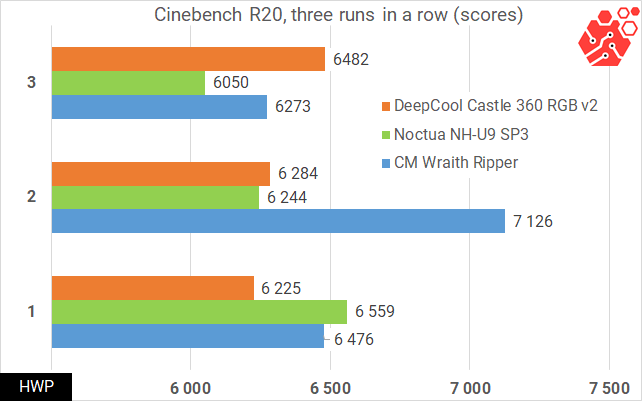
Having run Cinebench R20 three times, we see a huge error, which again depends on how quickly the processor cools down in those short periods when it is not 100% busy with the rendering process. This is approximately how real software works, causing a short-term load of computing cores. Due to its weight and 7 heat-conducting pipes, the Wraith Ripper retains its inertia, but over time it still loses its advantage.
The test results speak for themselves: for top-end Threadripper processors installed in workstations, top-end specialized coolers, such as the Cooler Master Wraith Ripper, are needed, but they also do not guarantee you an acceptable temperature right here in all tasks. Be prepared to provide your processor with a spacious case with powerful airflow to keep the ambient temperature as low as possible, and all your heatsinks in your case should be at the end of the airflow, just before exiting the case.
Package contents and conclusions
The cooler comes in a double black box, complete with cable and instructions.
Average retail price of the device is $ 120.
Conclusions
Cooler Master Wraith Ripper has one noticeable drawback: you can't do anything with the standard fan: it's neither easy to replace, nor to pair it with a second one. And although according to our tests the Wraith Ripper is one of the few solutions that can be purchased for a workstation with top-end AMD Threadripper with a power higher than 200 W, precisely because it is impossible to install a second fan, this cooler is still rather weak for 250 W processors. Today AMD has 225W TDP processors, and it is mainly the EPYC series on the Rome core, which are great for multi-threaded computing tasks. From our list, Wraith Ripper is the only one that kept the temperature in Cinebench R20 below the throttling threshold and in the second run of the test it gave a 20% boost to the speed.
Well, an air cooler under these conditions shows itself better than a gaming SVO with a universal mount, while it is quieter, and costs almost the same. Therefore, if you are choosing a cooler for your AMD Threadripper workstation, then we recommend Wraith Ripper for the following processors:
- Threadripper 2950X, 2920X, 1950X, 1920X, 1900X
- EPYC 7742, 7702, 7662, 7642, 7552, 7542, 7502, 7452, 7402, 7352, 7302, 7282, 7272, 7262, 7252, 7232
Mikhail Degtyarev (aka LIKE OFF)
07/04.2020










